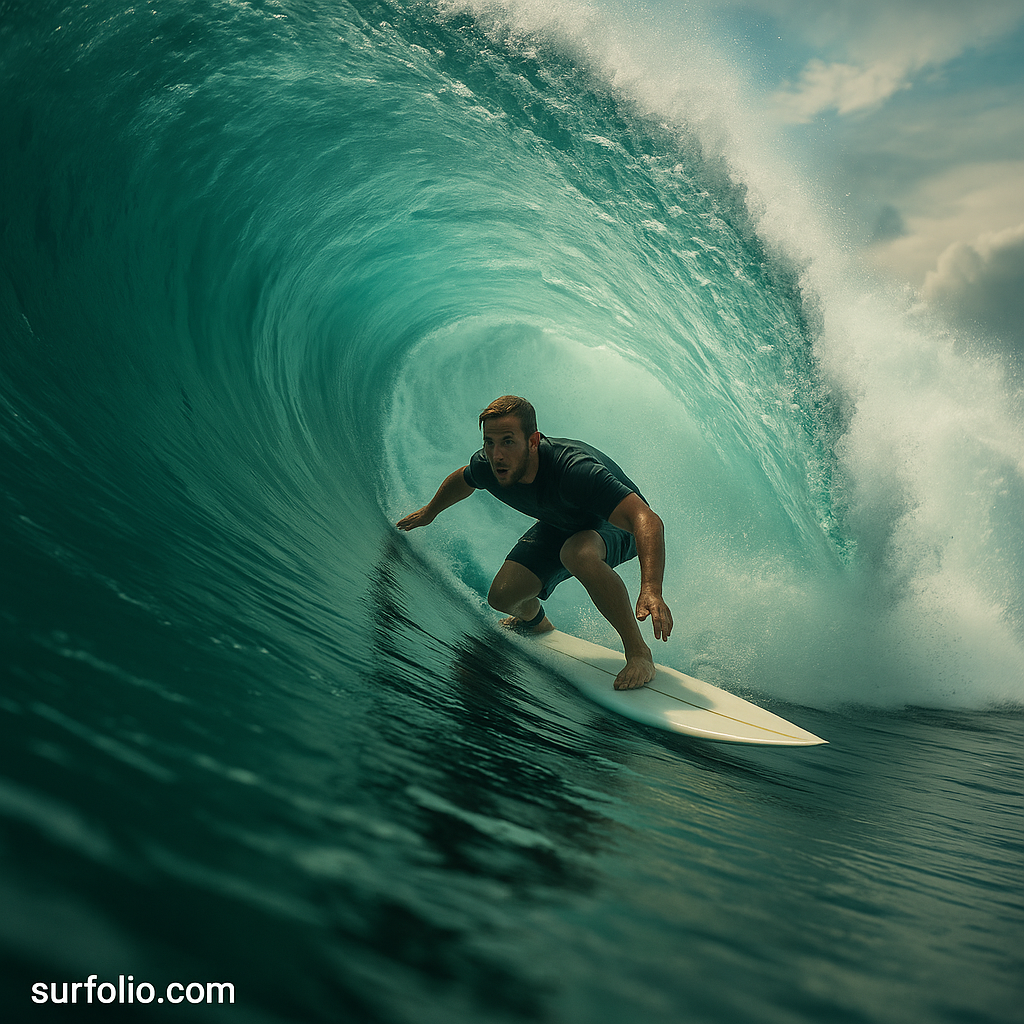
Few sights in surfing compare to the perfection of a barreling wave—the ocean folding over itself, forming a hollow tunnel that surfers dream of riding. But behind that fleeting moment of magic lies a fascinating blend of science and nature. Understanding how barrels form gives surfers not just appreciation, but the knowledge to find (and time) them better.
What Is a Barrel?
A barrel, also called a tube or pit, is the hollow part of a breaking wave that curls over and creates a tunnel. When a surfer gets “barreled,” they ride inside this cylindrical pocket of air and water—one of the most thrilling experiences in all of surfing.
But not every wave can form a barrel. The shape, power, and ocean floor all have to align just right.
The Key Ingredients of a Perfect Barrel
1. Wave Energy and Swell Period
Barrels begin far out at sea, where storms generate swells. The longer the swell period (the time between wave crests), the more powerful and organized the waves become when they reach shore.
Long-period swells carry more energy, which allows the wave to rise steeply and break powerfully—perfect conditions for a hollow barrel.
2. Ocean Floor (Bathymetry)
The shape of the ocean floor—called bathymetry—is the real sculptor of waves.
- Reef Breaks: Reefs create some of the most consistent and predictable barrels, like at Teahupo’o or Pipeline. The abrupt change in depth causes the wave to pitch forward suddenly.
- Point Breaks: Waves peel along rocky points, forming longer, more open barrels.
- Beach Breaks: Sandbars can form temporary barrel sections, especially after storms that reshape the bottom.
The steeper and more defined the underwater contour, the more likely a wave will “throw over” and form a tube.
3. Wave Steepness and Lip Velocity
When the wave’s base slows down (as it hits shallow water) and the top continues moving fast, the lip pitches forward. This motion creates that hollow shape.
The speed and thickness of the lip determine the size and power of the barrel—thicker lips make heavier, faster-breaking tubes that challenge even expert surfers.
4. Offshore Winds
Offshore winds (blowing from land to sea) hold the wave face upright and delay its collapse, allowing the barrel to form perfectly. Onshore winds, by contrast, crumble the face and destroy the tube shape.
That’s why surfers chase dawn patrols and early offshore conditions—they literally shape the wave’s perfection.
5. Tides and Timing
Tides affect water depth and wave shape dramatically.
- Low Tide: Waves tend to break shallower and hollower.
- Mid Tide: Often the sweet spot for balanced barrels.
- High Tide: Can soften the wave, reducing hollow sections.
Every surf spot has its own tide “personality.” Learning it helps you time your sessions for maximum barrel potential.
Famous Barrel Spots and Why They Work
- Pipeline (Hawaii): Shallow lava reef and powerful North Pacific swells create one of the world’s most perfect and deadly barrels.
- Teahupo’o (Tahiti): A sharp reef shelf and deep ocean trench focus immense swell energy into a thick, heavy tube.
- Uluwatu (Bali): A long, peeling left with sections that barrel perfectly over its limestone reef.
- Hossegor (France): Shifting sandbanks form heavy beach break barrels during autumn swells.
Each of these breaks is a masterclass in the physics of wave energy meeting precise ocean-floor geometry.
The Sweet Science: Why Barrels Feel So Magical
Inside a barrel, you experience a balance of chaos and calm. The pressure difference creates a vacuum of air surrounded by rushing water. Sound dampens, vision narrows, and time seems to slow—your senses focus entirely on the present moment.
It’s not just adrenaline—it’s the physics of flow and human awe combined.
How to Read and Catch a Barrel
- Position yourself deep near the peak.
- Angle your takeoff to match the wave’s direction.
- Compress your stance to fit inside the tube.
- Keep your eyes forward, not up.
- Exit cleanly by timing your speed with the wave’s opening.
Barrel riding is as much intuition as it is skill—part science, part art.
Final Thoughts
Perfect barrels are rare, fleeting, and utterly captivating. They’re the ocean’s way of showing off its precision—a mix of storm energy, seafloor shape, and atmospheric balance.
Understanding the science behind them doesn’t make them less magical—it makes them even more so. Because when everything aligns, that brief, hollow moment becomes timeless.
